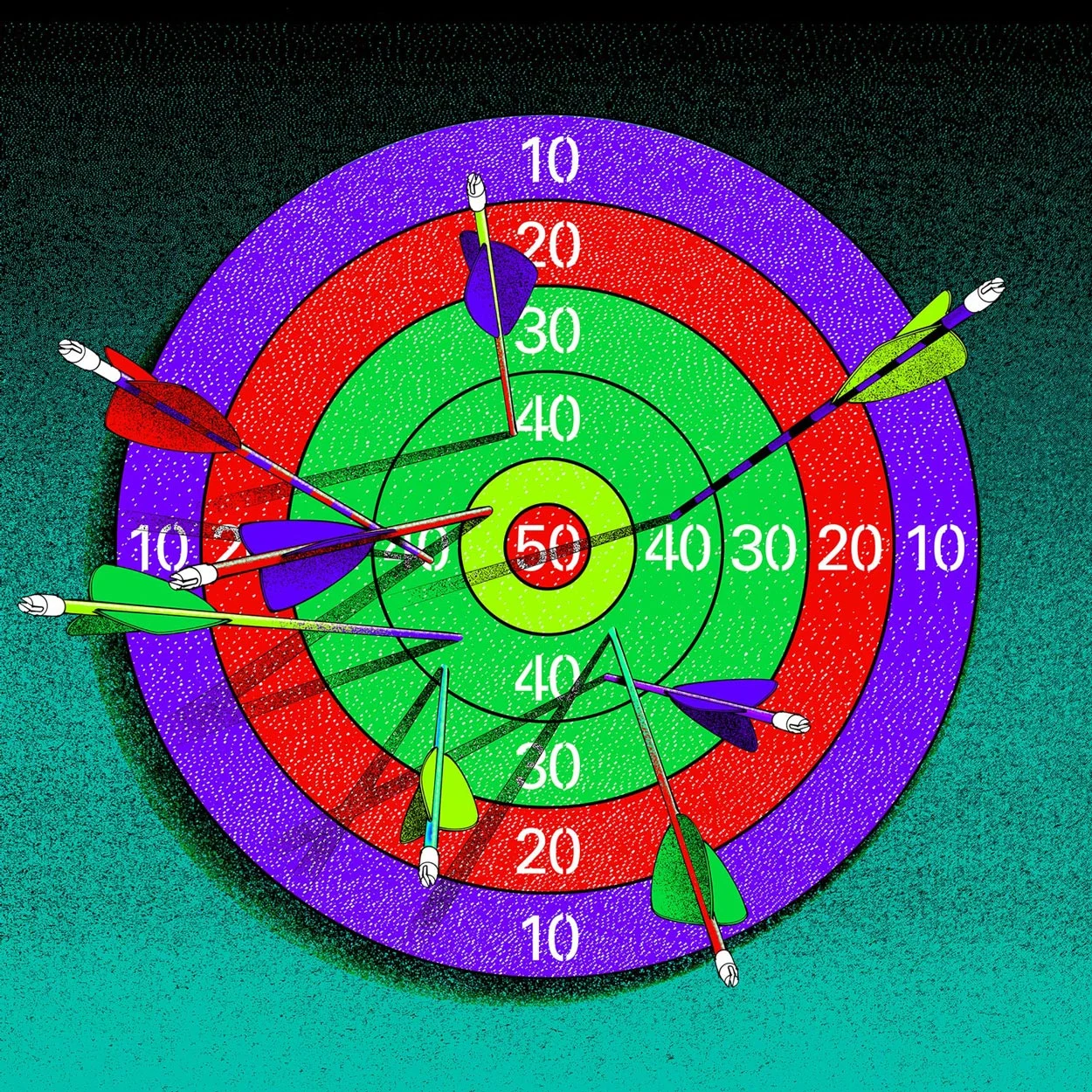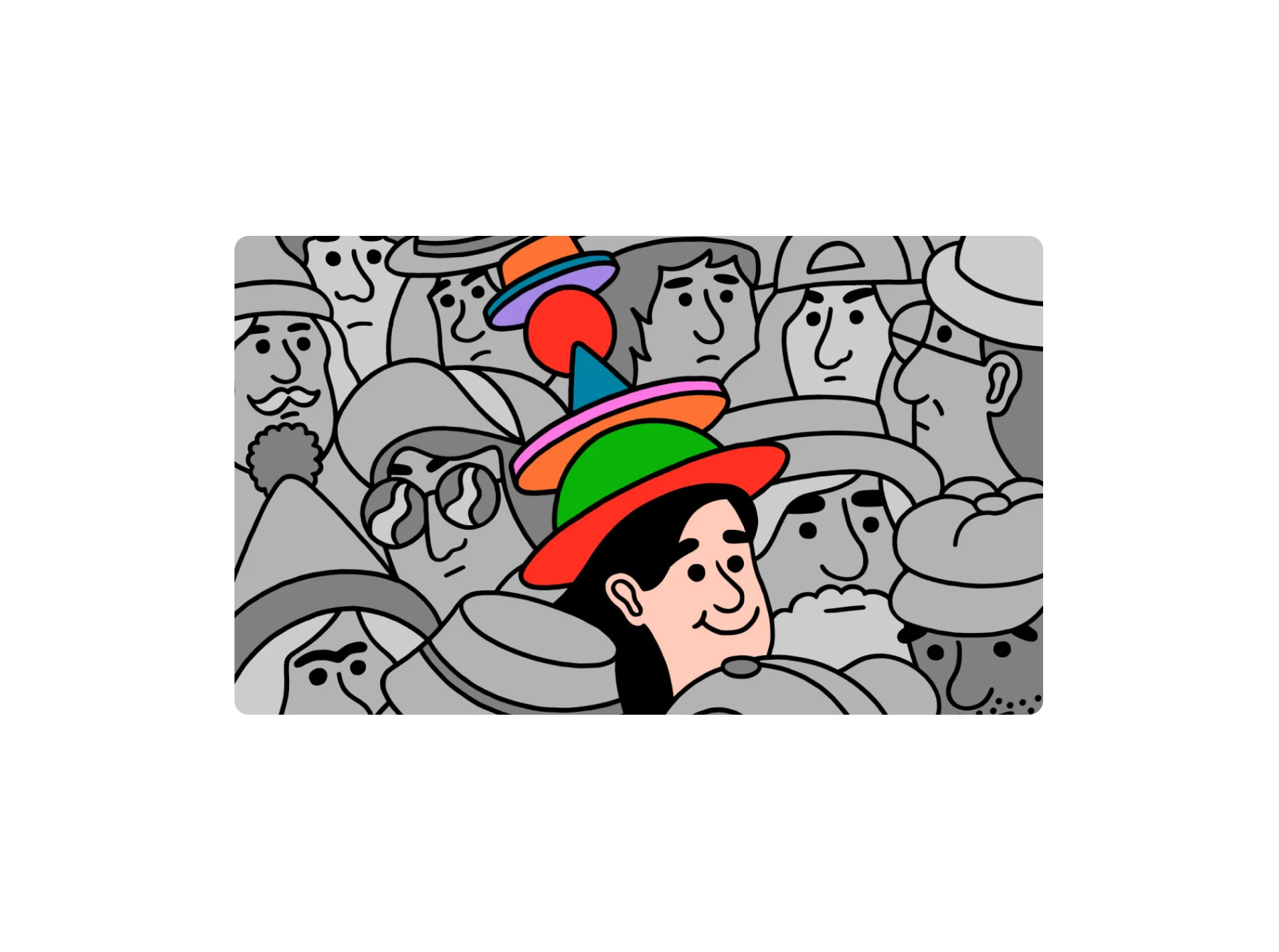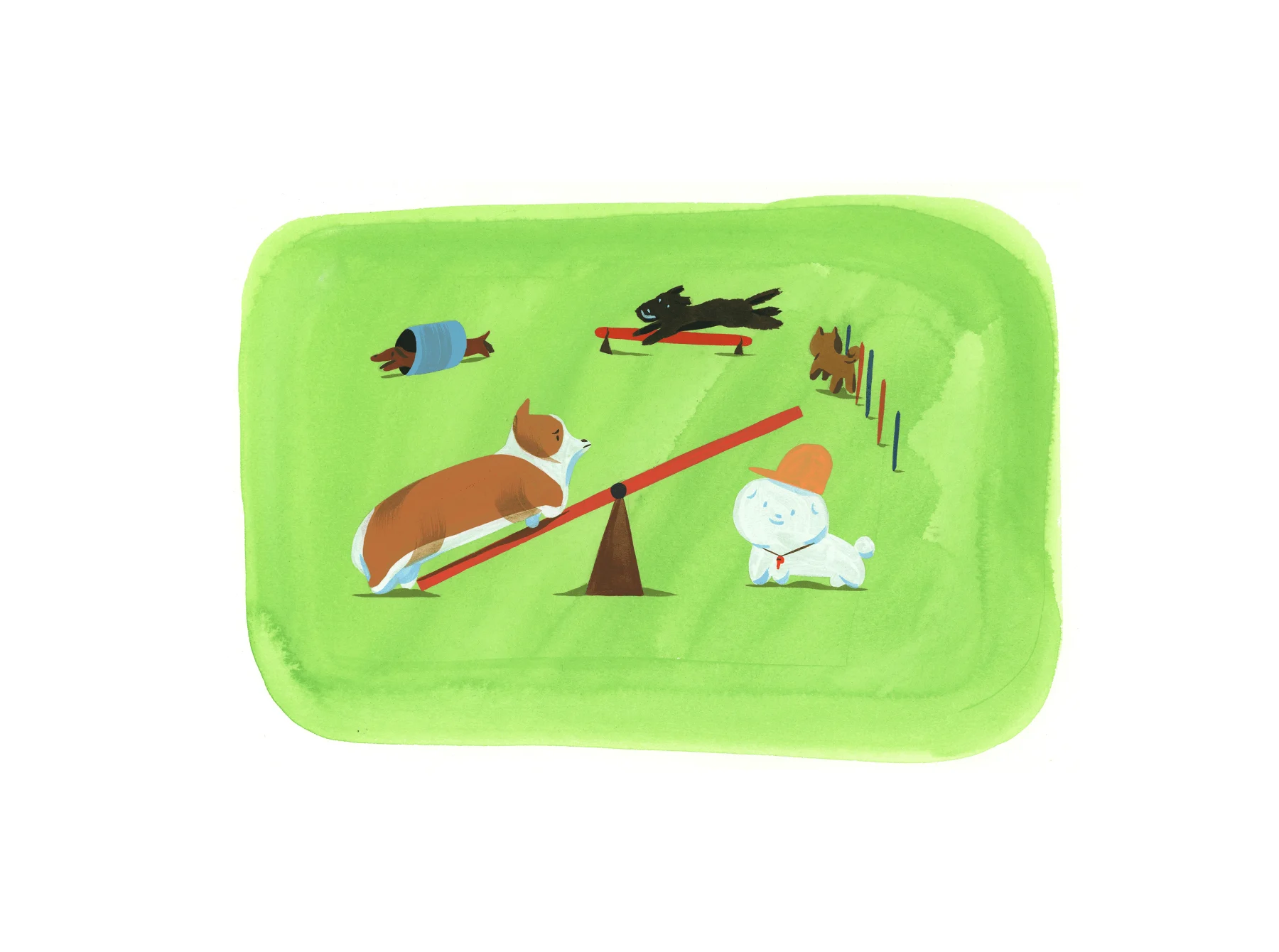


In our practical advice series Stuff They Don't Tell You, James Cartwright offers tips to navigate all those questions that sometimes go unanswered in the creative industry. In partnership with Mailchimp, this specially-commissioned four-part series focuses on what small businesses can do to take their company to the next level.
Illustrations by Viktor Hachmang.
I know I’m not alone in finding it hard to separate the professional potential of social media from the personal challenge of using it. If I decide to contribute something pithy and timely (humor me here) to Twitter right this minute, there’s a real risk the rest of the next hour will disappear and a nominal chance I’ll log off having forgotten to post anything at all. Twitter’s a vampire that feeds on my time. It’s also a source of regular employment and the best means I have to promote myself to new clients.
“I don’t think half of the opportunities and partnerships I’ve had personally and as a business would have been possible without a strong social media presence,” agrees Emma Sibley, author and founder of London Terrariums. “I know publishers have got in touch with me because of what they have seen on social media, and we get contacted a lot from companies sliding into our DM’s with new opportunities and requests for workshops. It’s just the norm now.”

At a simple level, social media is the easiest and cheapest form of marketing available to a small business, and if you’re prepared to put in the effort, it can be immensely rewarding. “Social media is a great way to promote your products and grow your audience, but it tends to be a crowded landscape,” says Mailchimp’s director of product marketing, Alison Sitzman. “The key is to understand your audience and track how they engage with your content on different platforms.”
“Generally speaking, Instagram does well with highly-curated static images and short videos. Facebook is geared more toward news, entertainment, and humor, and lifestyle shots that show people using your product usually get more engagement. Twitter's fast-paced community expects quick, timely, and easily digestible business tips, news articles, or quips on trending topics, and LinkedIn is specifically designed for businesses and professionals, so it’s great for promoting your business’s blog posts, industry research, business tips, and company news.”
Between Instagram, Twitter, Facebook, LinkedIn and various other platforms that rise and fall from one year to the next, managing a coherent social media presence can be a lot of work for a small company, and a multi-channel approach may not be worth it. Deciding where and how to engage your audience is vital if you’re going to produce a coherent social media strategy or, at a basic level, just make the most of your channels.
Keeping your audience at the center of your strategy always will ensure long-term success.
For Adèle Favreau and Maxime Prou, the duo behind French illustration and screen printing studio, Atelier Bingo, it simply doesn’t make sense for them to waste time on platforms that aren’t suited to their work. “We are mainly present on Instagram, a little on Facebook and not at all on Twitter,” they say. “Instagram allows us to exchange and share our work. It is also a great way to discuss and discover the work of other people from all over the world."
“We live in the countryside in a fairly isolated way, so Instagram for us is above all a way of being present on the artistic scene. It allows us to share our daily life in the workshop, our work process, our experiments, collaborations, our latest personal projects and our news.”
Of course, it may not be quite so straightforward to dispense with channels in which you’ve already invested time and energy building up engagement. Alison Lewis, editor of literary magazine American Chordata: “I would love to just forget about Facebook.”
So what’s the secret to standout social media success? Read on, my lovelies, and you shall find out.

Understand your audience
What’s that, you read a whole other article about this very subject only two weeks ago? You did indeed, and that should tell you how important a matter it is. On social media, your audience is everything. Knowing who you’re engaging on which platform will make a huge difference to what you post and how effective your content can be.
“While finding the right platform for you is fundamental to getting started, keeping your audience at the center of your strategy always will ensure long-term success,” says Sitzman. “First, start with the channels your audience most regularly uses. A multi-channel strategy is great, but when starting off, pick a few channels to master then build from there.”
“We reach an older generation on Facebook mostly,” says Lewis, “and sometimes writers and artists from particular countries outside the US. But Instagram is our widest reach by far, both in terms of numbers and places around the world. I’m not sure exactly why other than the obvious fact that the visuals and the aesthetic are a big part of the magazine. Posts seem to last longer there as there’s at least a bit more time to linger, whereas Twitter is just so fast!”
Look for moments to inject that human connection and your brand’s personality.
Give something back
“There is certainly some fun to be had in engaging an audience on social media,” says Lewis. “I think it gives us a breath of life to engage with an audience directly and immediately which we don’t get otherwise outside of live events, launch parties and readings.”
“Sharing messages that are only focused on selling or marketing your product could diminish trust and hurt your customer relationships,” says Sitzman. “On the flip-side, missed opportunities can also be just as big of a risk to your brand. Look for moments to inject that human connection and your brand’s personality by interacting with your audience on social. It could be just as simple as a favorite or like, but goes a long way in building and scaling your brand.”
Create content to fit the medium
For a literary magazine like American Chordata, just reposting content lifted from the printed page isn’t a feasible strategy for their channels. Poetry and prose don’t work naturally on Instagram or Twitter, so a different approach is required. “What I find great about social media is the chance to pull back the veil a bit,” says Lewis. “It gives readers a sense of the personality and real people and process behind the making of a magazine. Then the magazine itself is the more curated, artistic whole.”

Make sure the medium is working for you
Every channel has its own suite of features which all lend themselves to different applications. “We document all of our workshops through Instagram Stories,” says Emma. “This is perfect as it allows people who couldn’t be there in person to see what we do. Stories are also a great way for promoting new products and workshop tickets using the ‘Swipe up’ link — this has proven invaluable for us.”
The visual strength of Instagram has also allowed Adele and Maxim to forgo a physical portfolio to show their work to clients. “We are often contacted on this network for collaboration proposals and our clients often discover our work this way, too. Given that, we don’t really mind how many followers we’re getting… we're not bloggers!”

Hire someone else to do it
If you don’t have the time or any real inclination, keeping a strong social media presence going could turn the day-to-day of your small business into a chore. That chore could easily be somebody else’s full-time job (some people really do love to tweet!).
“The reality is that many small business owners wear all the hats when starting their business,” says Sitzman. “They act as CEO, creator, janitor, accountant, social marketer, manufacturer and everything in between. While it can be an advantage for the founder to start their company’s social media presence, they could be missing opportunities due to lack of time. Once you’re ready to hire someone you’ll have done their job before, and you’ll be well-equipped to ask the right questions and set the right goals.”
Or… don’t.
“Over the past few years I have been delegating different areas of London Terrariums,” says Emma. “As the company grew it was clear I couldn’t do it all. But I think I will always keep myself attached to the social accounts. I’ve had comments in the past from followers who like how personal it is — I post about my dog, Walnut Wiggins, and throw in a few ‘relevant’ holiday photos every now and again. I think having myself as the voice of our social media makes it a much more personable brand.”
WePresent and Mailchimp have partnered to support creatives in business. This series of Stuff They Don’t Tell You focuses on how creative companies and individuals can define their brand and scale up their business.





